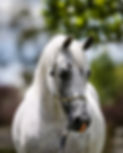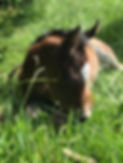The Society
The New Zealand Arabian Horse Society (Inc.) is the registering body for Purebred, Anglo and Derivative Arabian horses in New Zealand.
Up until 1970, New Zealand bred Arabians were registered with either the Australian or English Arabian Horse Societies. New Zealand became a stand-alone operation, instituting the Constitution of the “New Zealand Arab Horse Breeders Society (Inc.)” to take effect from 16 September 1970. The founding members decided that the Society’s most important function was to preserve the purity of the breed by putting robust rules in place in order to meet the World Arabian Horse Organization (WAHO) parameters of registration.
New Zealand published its first stand-alone Stud Book in 1971 and has subsequently printed further volumes with the latest being Volume 11 published in 2019. Regulations also exist to enable the registration of Anglo Arabians (Arabian and Thoroughbred blood) and Derivative Arabians (of at least 12.5% Arabian blood) and this information is contained within separate Registers.


The Arabian
Whilst the origin of the Arabian horse is something of a mystery, and in his original form he was somewhat smaller than the modern Arabian, his early history goes back around 5000 years, making the Arabian the oldest breed of horse in existence.
Other than size, the Arabian horse is relatively unchanged since the earliest of times. The skin of the Arabian is sleek and supple, the jaws and legs clean of long hair, and the mane and tail are soft. Whilst Arabians have virtually covered the colour palette, the most common colours are bay, chestnut, grey and brown. The height of the Arabian is traditionally within the limits of 14.1hh to 15.1hh although it is no penalty to be outside these guides. Perhaps the best hallmark of the Arabian is the head - short and tapered, jowls deep, with eyes that are dark and large. In profile, the characteristic “dish” is best represented and the small, finely shaped ears are often tipped slightly forward.
Arabians represent speed and lightness in their movement. The walk should be fast and free with the hind hooves overstepping the front track by some 20-30 centimetres. The trot is free with the hooves reaching out to float at full stretch before touching the ground. The canter is smooth and elastic. The gallop is free and ground covering.
The Arabian in NZ
Early records show that the first Arabians arrived in the South Island of New Zealand, imported from Australia, along with a shipment of Merino sheep. In 1840, the first Thoroughbred mare arrived in New Zealand. Following this arrival, a Captain Hunter purchased an Arabian mare, “Medora” at a dispersal sale in Australia and she is credited as probably being the first Arabian to reach our shores. In the 1870’s, the colourful and noteworthy pastoralist George Moore arrived to establish the 100,000 acre Glenmark Station in the South Island. His partiality for Arabians stemmed from time in India and it was from that country that he imported “Sultan”. Later three stallions arrived in New Zealand ~ “Hadji Baba” to Canterbury in 1875, “Arab Child” to Hawkes Bay in 1878 and “Crusader” to Gisborne in 1888. None of these horses are found in today’s modern pedigrees.
Australia has always been a great source for New Zealand breeders, riders and enthusiasts of Purebred and Arabian Derivative bloodlines. The advent of reliable air and sea freight has seen buyers sourcing new horses from our near neighbours, who represent the second biggest registry in the world. Others have come in from the United States, the United Kingdom and Europe and it is to the credit of these importers who have shared their new bloodlines with others in New Zealand to further broaden the gene pool. In more recent years the advancement in the use of frozen semen has allowed dedicated breeders unlimited access to international bloodlines.


Preserving the Purity
Today the Purebred Arabian is recognised as the oldest purebred species of horse in the world with pedigrees jealously guarded and recorded for posterity by breed societies in most countries round the world. Each recognised breed society is in turn affiliated to the World Arabian Horse Organization (WAHO), an organisation that works to maintain over all else the racial purity of the breed. Stringent requirements are met prior to membership of WAHO being accepted and the same parameters are used by member countries when registering Arabian horses worldwide. The New Zealand Arabian Horse Society has been a WAHO member since 1972 and is the registration authority for the breed in New Zealand.
When you purchase a NZAHS registered Purebred Arabian horse you can be assured of the authenticity of its bloodlines and the commitment the breeder has made to preserve the purity of the Arabian horse in New Zealand.
The Council
The Society is governed by a member-elected Council made up of a maximum of seven members. Half of the members of Council retire annually in rotation but are eligible for re-election. Nominations are received in February of each year from Full Members who must own Purebred breeding horses and have been a member of the NZAHS, or recognised Arabian Society, for at least three years. A postal ballot, if needed, is held in April each year and the new Council take office following the Annual General Meeting.
The founding Councillors of the Society took office in 1970 ~ Mr AR Ayliffe (President), Mr K Cholmondeley-Smith, Mr AA Edward, Mr A Edward Jnr, Mr RM Gubb, Mr TW Harrison, Mr W Kroef and Mr MC Flintoff. The Society has a robust set of Rules and Regulations in place to ensure the ongoing purity of the Arabian horse in New Zealand.
The Society has two Patrons ~ HRH Princess Alia Al Hussein of Jordan and Mr Peter Upton of the United Kingdom.
